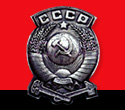| Russia
has blazing summers (+30C and higher) and freezing winters
(-30C and lower)
Our weather-charts would go off the scales
used by conventional travel companies – but then,
our trips and destinations aren’t conventional!
Our immense destination-zones run from near the Polar
Circle to the Sea Of Japan, from Central Europe to the
extreme East of Asia... and from the depths of Siberian
winter to the scorching steppes of the Gobi Desert.
Due to its vast size, Russia has blazing summers (+30C
and higher) and freezing winters (-30C and lower), but
one look at the map will illustrate how impossible it
is to answer “what will the weather be like?”!!
A Trans-Siberian journey crosses three countries and
two continents – there’s no “snapshot
weather picture”!! The picture of seasons is a
little different to W Europe – here they are:
GOING IN THE SPRING: (May
& June)
This is when we’d choose to travel ourselves.
You avoid the blazing summer heat (especially in Mongolia)
and there’s all the bright spring flowers –
and everyone in a happy mood after the winter snows
have melted. The last week of June is the White Nights
Festival (of the performing arts – ballet, theatre
etc) in St Petersburg, which gets super-busy –
so book early if you’re a fan, or schedule-around
to avoid the thronging crowds. June marks the end of
the theatre season, so if you want to see ballet or
opera, this is your last chance.
GOING IN THE SUMMER: (July
to mid-September)
This is peak season, expect hot baking sunshine
– and lots of foreign visitors! Early July has
the National Naadam Festival in Mongolia (see p33) which
causes log-jammed travel bookings for months in advance.
Siberia & Mongolia offer superb opportunities for
outdoor activities, but the weather-window of opportunity
is restricted to this season only – for rafting,
trekking, horse-riding etc. Moscow’s City Day
festivities are on 6th Sept. Theatres (including ballet
& opera) mostly close-down entirely over this period,
although you might catch a touring show if you’re
lucky.
GOING IN AUTUMN: (mid-Sept,
October & November)
The weather is hard to predict in late September
– Russia often has a glorious “Indian Summer”,
although it’s not guaranteed. It’s looking
rainy by October, and outdoor activities are really
not pleasantly feasible. By mid-November, snow has usually
started, but there’s not yet enough snow to enjoy
winter fun. The new theatre season opens, and there’s
usually a huge choice of classic and new productions
to see.
GOING IN WINTER: (December
to April)
There’s a long winter – locals
invent lots of ways to amuse themselves whilst the snow
is with us! Go for a real Russian banya (sauna) –
which means jumping in the snow afterwards! Go skating
in Gorky Park, husky-dog sledding in the Urals Mts,
take a skidoo on Lake Baikal (it’s frozen 3m thick!),
head to the Bolshoi or Mariinsky ballet, a troika-ride,
or warm-up with some vodka?! January has three holidays
in a row – New Year (Jan 1st), Russian Christmas
(Jan 7th), or that odd-named festival the Old New Year
(Jan 14th). If you miss those, you get another chance
at New Year – in China, a little later, so you
can wish your friends Kung Hei Fat Choi!). |


